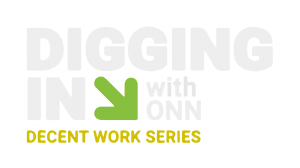
Blog
The Reality of Coalition Building & Systems Change: Reflections on Maytree’s Connecting for Change conference – Archived Content
Last week, The Maytree Foundation kicked off the end to a great year with its conference, Connecting for Change, a day to build thought leadership on systems transformation and poverty reduction. Throughout the day, Maytree set the tone that systems goals must be accountable, measurable, accessible, and reflect lived experiences. Coinciding with Human Rights Day, the positive energy in the room was apparent.
Several key themes from the day resonated strongly with us:
“Storming the Bastille”
The morning included the panel, “Police Carding: a matter of rights, a time for change.” Panelist and former Toronto City Councillor, Gordon Cressy said, “We need Bastille stormers,” – a big idea that stuck with delegates throughout the day. This call to action that we need the revolutionaries, the radicals, and activists for change got us thinking about our network champions and the many forms that they take.
Advocacy is a process of negotiation – not just between you and the people you are trying to influence, but among the people you are working with and the different tactics they wish to exercise. When is a rally at Queen’s Park appropriate? When is it more effective to meet one-on-one with your MPP? What is the value in a shout out to policy influencers on social media? If you had just one big media article, would it make a difference?
The roles that individuals play on the advocacy spectrum are diverse: the inside influencer, the radical, the quiet hero, and others. The power lies in understanding the values of your fellow advocates, the intermittent and long-term goals required to reach change, and creating tactics based on them.
Reaching “Genuine Democracy”
The same panel addressed concerns about how citizens trust and hold police officers and politicians accountable. The move to “genuine democracy” is something we aim for but is slow to achieve. It’s not just about advocating for a policy change but often involves a culture shift. In any issue, we can ask ourselves: What is embedded? What needs to shift? Why does it need to shift? What are the possible solutions that could allow a shift to occur?
Democracy is at the core of nonprofit work. Not only do we advocate for our constituents and the people we serve, but we also advocate for ourselves. As a sector, the issues we face affect our organizations from the ground to system level – from governance, funding, and decent work, to evaluation, accessibility, and more. Yet systemic change cuts across all sectors and issues. We need to broaden our understanding of how government, the private sector, the media, and the public play a role in perpetuating and transforming systems.
While every big change happens through integrated networks, there are still tough moments when it comes to advocacy work:
> A story gets hyped up in the media, and then the issue is forgotten the next week.
> A policy file will gain traction but may get caught up in legislative procedures or political changes in government.
> A champion advocate (a volunteer, a donor, a politician, or others) may leave.
> A charity that has a burning desire to advocate simply can’t because of charity regulations and pre-existing partnerships with government and funders.
Sound familiar? Understanding the likelihood of these challenges and building a contingency plan for them is a must. Then, when you achieve those “wins” (no matter how big or small), you’re changing systems.
The concept of “we’re not going away”
Desmond Cole, a journalist and panelist, said it well: Democracy is not a machine. Care for it. Nurture it. It’s not just about band-aid solutions (paraphrased). One of the breakout sessions, “Making Work Pay,” included the Centre for Evaluation Innovation’s Advocacy Strategy Framework, which encouraged delegates to think critically about where they fit on the advocacy spectrum.
So, where’s the ONN? Thinking about where we fit on the spectrum, we can see that we’re active in community organizing, model legislation, regulatory feedback, analysis/research, and policy maker education. The power of our provincial network is that we help to build the advocacy framework through community mobilization, public education and awareness, and advocacy capacity building.
What are some ways that systems-changers can round out their Advocacy Framework?
> Understand what you’re good at, the role you play, and who you could partner with (that is, likely and unlikely allies).
> Build consensus. When there’s no consensus, don’t be discouraged. What is simply a symptom, and what is the real issue up for debate?
> Understand and listen to all players involved and frame the issue in a way that will eventually lead to mutual solutions and stronger coalitions.
It takes time to build a network, and even more time to leverage that network for systems change. Given the tenacity of the nonprofit sector to tackle some of the world’s biggest issues, it’s clear that we’re not going anywhere.
What are some of your advocacy tactics? Tweet us @o_n_n
Want to be a part of our network? Join Us!
Thank you to the Maytree Foundation for providing the image for this blog. Photo credit: Brice Ntwari


